THE THAMES RIVER POLICE MUSEUM
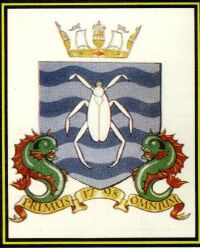
I adore a good museum. I can spend hours, even days in them. I spent an entire day (eight hours) in the Van Gogh Museum in Amsterdam. I spent two days in the Rijksmuseum, also in Amsterdam, thirty minutes staring at Rembrandt’s The Nightwatch alone. The British Museum is where I saw the Elgin Marbles, the Rosetta Stone, and the mummy and sarcophagus of King Tut when I was only nine years old. Yes, my appreciation of museums has been a lifelong love affair.
As much as I love the big museums, the famous ones, I also have a penchant for sussing out obscure little museums. I have discovered they are often the source of the most interesting and sometimes bizarre bits of history. Makes my writer’s heart go pitter-pat just thinking about it. I keep a running list of the ones I come across in my research, so I can visit them when I get the chance. The Thames River Police Museum is one such museum.
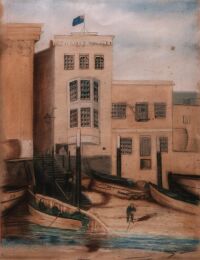
The Thames River Police or The West India Merchants Company Marine Police Institute, as it was known at its founding, began on July 2, 1798 in Wapping High Street. It grew out of the need to protect the companies whose cargoes were unloaded on the River Thames. It was estimated the importers whose warehouses lined the riverfront were losing up to 500,000 pounds a year to theft and graft. It wasn’t seen as a real problem until the government was presented with estimates of the losses of import dues they were missing and the losses on exports companies were suffering.
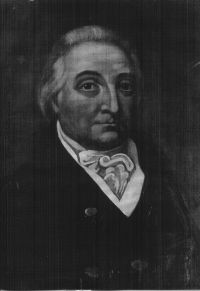
The plan for the organization, operation, and function of the force was first devised in 1797 by John Harriott, an Essex Justice of the Peace. He sought the legal advice of Jeremy Bentham and the political acumen of Patrick Colquhoun, the principle magistrate of Queens Square Police Office, to sell the plan to the West India Planters Committee. With the government’s approval and the committee’s financing the first organized police force in the world was born. Thus the Primus Omnium on the force’s badge.
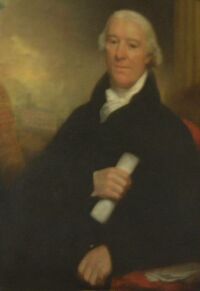
The working divisions of the world’s first organized police force were :
The Magistrates Office – Patrick Colquhoun serving as Superintending Magistrate
John Harriott serving as Resident Magistrate
The Lumping Department – In charge of the registration of legitimate lumpers to
unload West India Company ships.
Police Establishment – Consisted of rowing galleys, each with a Surveyor (an
Inspector rank today) and three waterman Constables
under him. The Surveyors were under a Superintending
Surveyor who had his own supervision galley with a crew
of four men. Surveyors took an oath to the Crown, by
whom they were empowered, and they were also sworn
and issued an excise warrant by Customs and Excise
Service.
There were also part-time ship and quay guards, employed only when the West India ships were in the river to be unloaded. These part-time constables were supervised by the boat patrols and in the beginning were only hired when necessary to oversee the unloading of ships. However, eventually they became full-time employees, the first River Police Special Constables.
The entire force at any given time consisted of only 50 officers to control the estimated 33,000 people who worked all of the various river trades. Colquhoun, in his treatise, suggested nearly 11,00o of those workers were actually criminals. Members of every river trade were thought to be on the game, in other words, employed in stealing cargo as it was unloaded or at some other point in the arrival process.
Note : If you have not read Colquhoun’s treatise The Policing and Commerce of the River Thames (1800) I invite you to do so as it is a fascinating work and very much an extant resource of great insight and vision.
As one can imagine, the criminal element did not take well to the work of the River Police. The efforts of these brave men caused these thieves to lose their livelihood. After about six months, a mob of 2000 men marched on the Office in Wapping to burn it to the ground, with the magistrates and any officers inside. John Harriott and his men managed to put down the riot, but Master Lumper, Gabriel Franks, was shot and died as a result of his wounds. This is the first recorded police death in history.
The cost of forming and establishing this police force in the first year was an estimated 4,200 pounds. During that same year, John Harriott reported to the Home Office that instead of an entire fleet of watermans’ boats clogging up the River Thames anytime ships were there to be unloaded, the scene was quiet and business-like. More important, he estimated the work of the Thames River Police had saved more than 122,000 pounds worth of cargo, not to mention rescuing several lives as well.
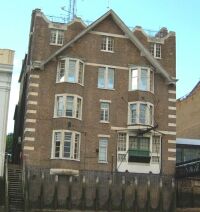
Because the museum is housed in a working police station, the headquarters of the Metropolitan Police’s Marine Police Unit, arrangements must be made ahead of time by appointment. Visits are normally conducted by the Honourary Curator, a retired serving officer with many years experience of policing the river. But look at all of the amazing things on exhibit !

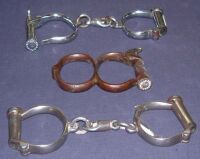
![]()


For some great research on the Thames River Police and more information about the museum I strongly suggest you visit the website.
http://www.thamespolicemuseum.org.uk/index.html
There you will find numerous articles written about the history of the River Police by current and retired members of the force. And you can even e mail them with questions. I actually discovered this gem of a museum via an online workshop offered by the Beau Monde Chapter of RWA a few years ago. One of the participants in the workshop was PC Bob Jeffries of, you guessed it, the Metropolitan Police’s Marine Police Unit. He has made a great study of the history of the Thames River Police and is always happy to answer inquiries. Visit the website and read his wonderful articles on The Wapping Coal Riot of October 1798 and The Ratcliffe Highway Murders of December 1811.
And should you get the chance, don’t miss this jewel of a little museum. Tell PC Jeffries I said “Hello!”